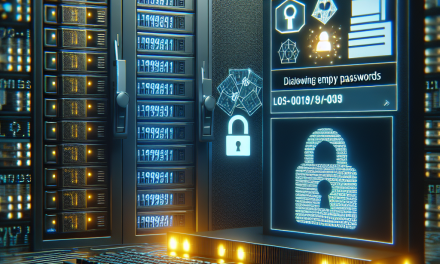In the fast-paced world of software development, code reviews have emerged as a fundamental practice to enhance code quality, facilitate knowledge sharing, and mitigate risks associated with new code deployments. For organizations utilizing Linux servers, implementing effective code review practices can significantly optimize not only application performance but also the development workflow itself. This article outlines best practices for enforcing code reviews specifically tailored for Linux server environments.
Why Code Reviews Matter
Before diving into best practices, it’s essential to understand the significance of code reviews:
- Quality Assurance: Code reviews help in identifying bugs and vulnerabilities before they reach production.
- Consistency: They ensure adherence to coding standards and best practices across the development team.
- Knowledge Sharing: Teams can learn from each other and spread expertise on the codebase.
- Enhanced Collaboration: Code reviews foster team communication and collaboration.
- Accountability: They promote a culture of responsibility and ownership of code.
Best Practices for Enforcing Code Reviews
1. Define Clear Guidelines and Objectives
Establish clear policies that define the purpose and expectations of code reviews:
- Set criteria for what constitutes a reviewable change (e.g., new features, significant bug fixes).
- Define roles—who should review, who is responsible for merging changes, etc.
- Establish a threshold (e.g., lines of code or complexity) that warrants a mandatory review.
2. Automate Code Reviews where Possible
Take advantage of automation tools to enforce and facilitate code reviews:
- Continuous Integration (CI) systems (like Jenkins or Travis CI) can automatically run tests on pull requests before they’re reviewed.
- Use linting tools (ESLint, Prettier) that catch formatting issues and style violations automatically.
3. Utilize Version Control Effectively
Leverage tools like Git to manage code changes efficiently:
- Use branching strategies such as Git Flow or the GitHub Flow to streamline feature development and code reviews.
- Ensure all changes are made through pull requests, facilitating a structured review process.
4. Encourage Thorough Documentation
Documentation plays a crucial role in effective code reviews:
- Encourage developers to add comments explaining complex logic or decisions made in the code.
- Maintain updated documentation of coding standards, tools, and setups that the team adheres to.
5. Keep Code Reviews Small and Manageable
Large code changes can be overwhelming and may lead to fatigue in reviewers:
- Limit the size of code changes to a few hundred lines of code at a time.
- Focus on one aspect of the code (e.g., functionality, security) during each review.
6. Foster a Positive Review Culture
Encouraging a supportive atmosphere can boost participation in code reviews:
- Train team members on how to give constructive feedback—focus on the code, not the person.
- Celebrate positive achievements and improvements that come from reviews.
7. Set Time Limits for Reviews
To maintain momentum and productivity:
- Establish guidelines on how long reviews should take (e.g., within 48 hours).
- Create escalation paths for long-standing reviews to prevent bottlenecks in workflow.
8. Integrate Code Review Tools
There are several tools and platforms that can facilitate code reviews:
- GitHub, GitLab, and Bitbucket offer built-in code review systems.
- Standalone tools like Phabricator, Gerrit, and Review Board provide advanced review workflows and integrations with CI systems.
9. Monitor and Iterate on the Process
Code review processes should evolve with the team:
- Regularly assess the effectiveness of the code review practices—seek feedback from team members.
- Make adjustments based on team size, project scope, and technology changes.
10. Promote Reviews Beyond Just Code
Encourage team members to engage in reviews of documents, designs, and architectures:
- This broader approach can contribute to comprehensive quality and consistency across all aspects of a software project.
Conclusion
Enforcing effective code reviews in Linux server environments can drastically improve code quality, team collaboration, and project success. By implementing these best practices, organizations can cultivate a robust development culture that not only values quality code but also promotes continuous learning and improvement. Embracing code reviews is not merely a task; it’s an investment in the team’s knowledge and the project’s integrity.
Additional Resources
For further reading:
Implementing these best practices for code reviews is crucial for leveraging the power and reliability of Linux servers in your development process. By fostering a collaborative and quality-driven environment, teams can deliver better software faster, benefiting both the organization and its users.





